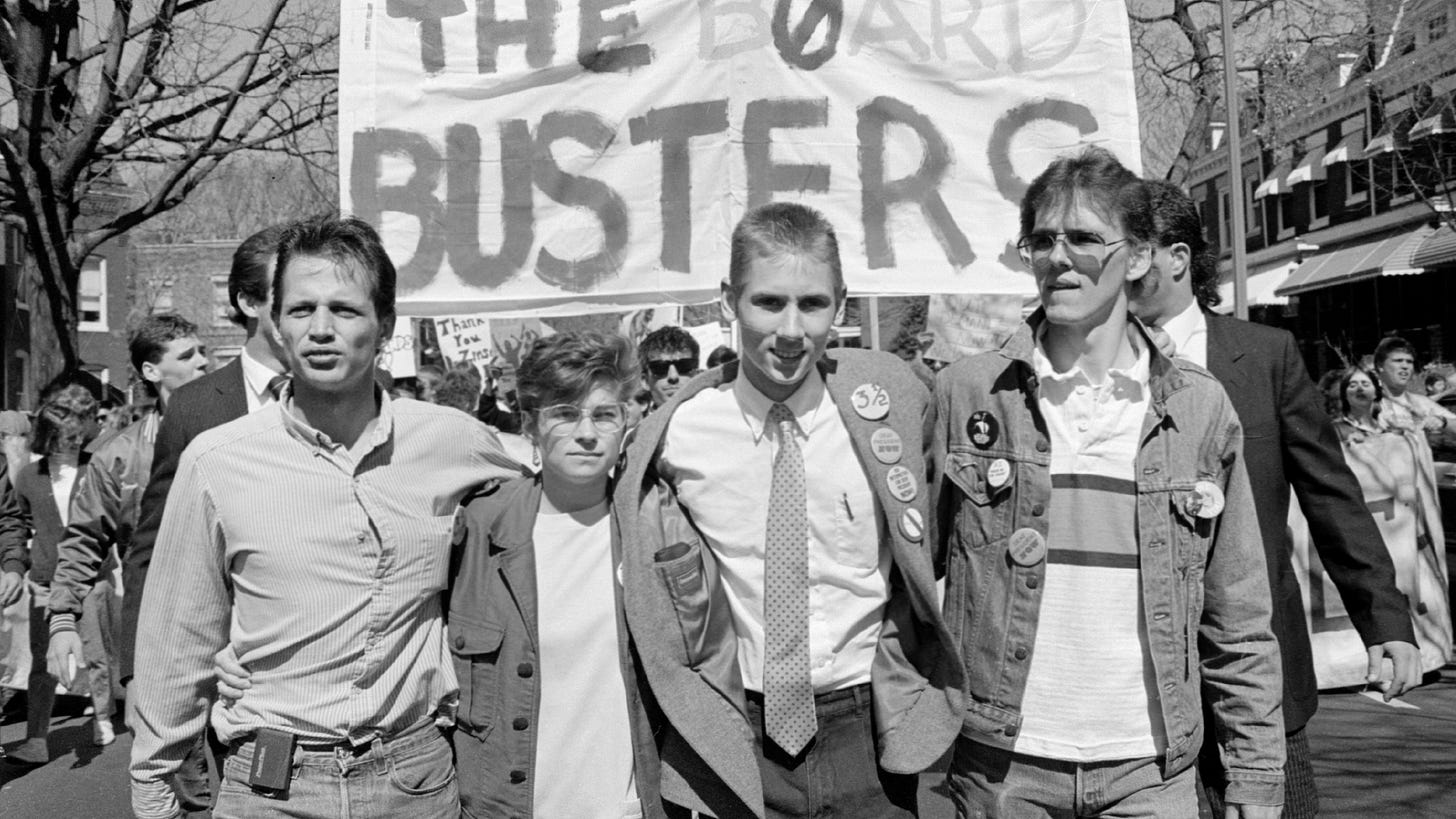Deaf President Now!
A documentary about a landmark protest issues a call for justice, loud and clear.

In spring 1988, Gallaudet University’s board of trustees appointed a new president. Of the three final candidates, two were Deaf, something the student body had demanded. Though Gallaudet was the only university in the world exclusively for Deaf students, it had never had a Deaf president in its 124-year history. But of the three finalists, the board picked the hearing candidate. The students found out via a press release. They immediately shut down the campus.
Halfway through the week of protests following the announcement, Jane Bassett Spilman—chair of the board of trustees and a hearing woman—came to Gallaudet University's campus to lay down the law. She could not sign; she made her speech in the university gym the same way she’d have done in any other setting, behind a podium loaded with microphones. Archival footage underlines the absurdity of the situation. The microphones look ridiculous, a physical symbol of Spilman’s authority, as well as the superiority she clearly feels over the students she’s addressing, whom she thinks of as less-than because they cannot hear.
So the students cancel out her voice, rendering Spilman unable to communicate: they pull the fire alarm.
Deaf President Now! traces the primary brush strokes of the 1988 protest demanding a Deaf president at Gallaudet University. Co-directors Davis Guggenheim and Nyle DiMarco (who is himself Deaf) build their story around the memories of the people who spearheaded the protest: Jerry Covell, Bridgetta Bourne-Firl, Greg Hlibok, and Tim Rarus. As documentaries go, the structure and form are standard, intercutting archival footage and photos with reenactments and interviews. It’s a slickly produced documentary with a decent budget behind it.
The film puts the money to best use through its sound design. This is a documentary about a Deaf protest, produced specifically for hearing people, and sound editor Adam Armitage and sound supervisor Jacob Bloomfield-Misrach play with the perceptions of hearing viewers by muting sound partially or completely at crucial moments, then blasting it in others. The moment when the students pull the fire alarm in particular stands out: perfect silence alongside B-roll of fire alarms flashing, cut against archival footage of the actual event with the alarms drowning out Jane Bassett Spilman’s words. She couldn’t make herself heard above the noise, but the students could still communicate, an advantage the board never gave them credit for.
The documentary does a good job of drawing visual connections between past and present, interweaving footage of the fire alarms—a symbol of student protest, communication, and ingenuity—with contemporaneous archival footage of the student protestors and present-day interviews with them. The documentary makes clear connections between past and present; when present-day Jerry says that Greg is “quiet,” meaning that he tends to sign in a small box, we see footage of Greg signing “quietly” as a student, and we mark how he takes up less space on screen in interviews than Jerry, who “signs big” because, as he says, he “feels a lot of emotion.” Most importantly, the movie underlines each person’s subjectivity—their senses of humor, the ways they communicate, how much space they like to take when they sign. Deaf culture is laid out clearly for hearing viewers who might not be familiar with it. After all, it wasn’t all that long ago that Deaf people were considered inferior, unable to reason, people to be ashamed of and hidden away.
Deaf President Now! demonstrates just how ridiculous that mindset of superiority is. The film is both funny and rousing, a retelling of a historic event with a sense of humor and a clear view of what’s just and unjust. The film doesn’t complicate the situation much; it has a clean narrative arc, a curve of conflict that flows through the protest week toward a dramatic climax. It smooths over some of the cracks and crevices, such as the interpersonal tensions amongst the protest leaders or the way the Gallaudet students negotiated their approach toward the media alongside their interpreters. But that smoothness comes with a clear moral view, a story about people asserting their rights to dignity and self-determination. We need that fire, now more than ever.—Sarah Welch-Larson
★★★☆
Deaf President Now! is streaming on Apple TV+ this weekend.




